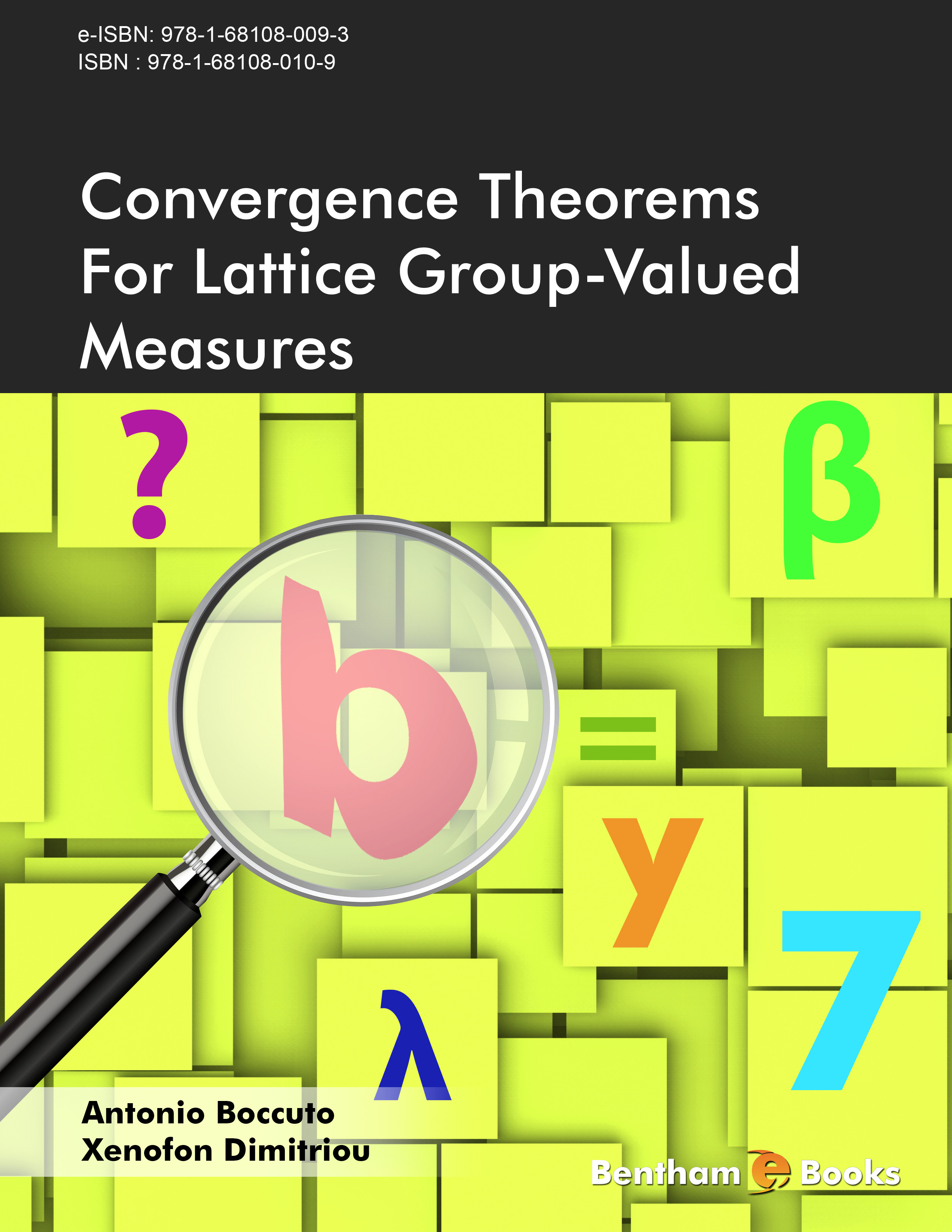Foreword
The eBook I am glad to read is a survey of the famous limit theorems for measures (Nikodým
convergence theorem, Brooks-Jewett theorem, Vitali-Hahn-Saks theorem, Dieudonné convergence
theorem, Schur convergence theorem). The first chapter seems to be the back bone of the eBook’s
development. Not only it describes the development of the main theorems in the realm of
convergence, but also provides a compact review of measures defined on algebras, vector latticevalued
measures and measures defined on abstract structures. The use of these ideas is extensively
described in Chapters 3 and 4. The historical development was enthusiastically approached since
the second author was preparing his master’s thesis. Since then he worked consistently on the
subject. Both authors are lovers of the historical development due to their Latin and Greek origin!
Therefore the reader has the choice to appreciate an excellent piece of work on this area. The
connection of Lattice Theory with Measure is explicitly described in this eBook and therefore the
reader can also be addressed to Probability Theory. That is this eBook offers not only a strong
background on limit theorems in Measure Theory, but also a solid theoretical insight into the
Probability concepts. The norm of a measure, defined in Section 1.2, the definition of a measure
on an algebra are essential tools to anybody working not only on Measure Theory but on
Probability Theory as well. The next step, the definition of a measure defined on an abstract
structure, needs more investigation in future work, while the authors cover completely the subject
up to our days.
The definition of a Filter, defined firstly, and its dual notion of Ideal, defined later, are very nicely
presented in Chapter 2. The relation between two Ideals is discussed in Section 2.1 as well as the
Free Filters and P-Filters. These definitions and results are applied in Chapter 4. Being the authors
consistent to their approach to limit theorems, they are extending Filters and Ideals with the
corresponding limit theorems to Lattice Groups. Therefore a Lattice-Group-valued Measure is
defined and the appropriate results are collected and presented. Nice examples on Filter
Convergence in Lattice Groups help the reader to understand common ideas such as limsup or
liminf through their development. The relation to Dedekind Complete Space is also discussed and
related to Measure Theory. Therefore, I believe, the interested researcher has a compact, solid and
rigorous presentation of Filters and Ideals.
The group with structure of lattice, known as (ℓ)-group, is what the authors investigate extensively
in Chapter 3. The sense of Integration is very strictly presented under the light of Measure Theory.
The convergence theorems for integrals are direct applications to Integration. The theoretical
development of this Chapter is applied in Chapter 4, where a number of results is discussed under
milder/weaker assumptions. Not only the limit theorems are presented but also interesting
decomposition analogues for (ℓ)-group-valued measures are also discussed.
Chapter 4 is devoted to Filter (Ideal) Limit Theorems and their applications. Limit results and
convergence theorems are presented in such a way the reader realizes that the authors are the grand
masters of this subject. The Regularity of a Measure is discussed on any Dedekind Complete (ℓ)-
Group. Topology is hidden everywhere and therefore also in Group-Valued Measures. This part is
strongly related to the Preliminaries presented in Section 1.1, where the ideas of Topology,
Measure and Banach Lattice are introduced.
The authors have collected more than 750 references on the subject. It is impressive not only for
the extensively great number of references covering a wide variety of disciplines, but also for the
fact that the authors refer to all of them inside the eBook.
I was glad when the authors asked me to write the preface. Then I realized that it was a hard work
to go through this eBook. But I was eventually happy to realize that this excellent eBook covers
the subject as well as possible. I did not have the chance to read such a compact review on the
subject. I thank the authors for giving me the chance to read it.
Prof. Christos P. Kitsos
Department of Informatics
Technological Educational Institute of Athens
Chair of the ISI Committee on Risk Analysis
Greece

